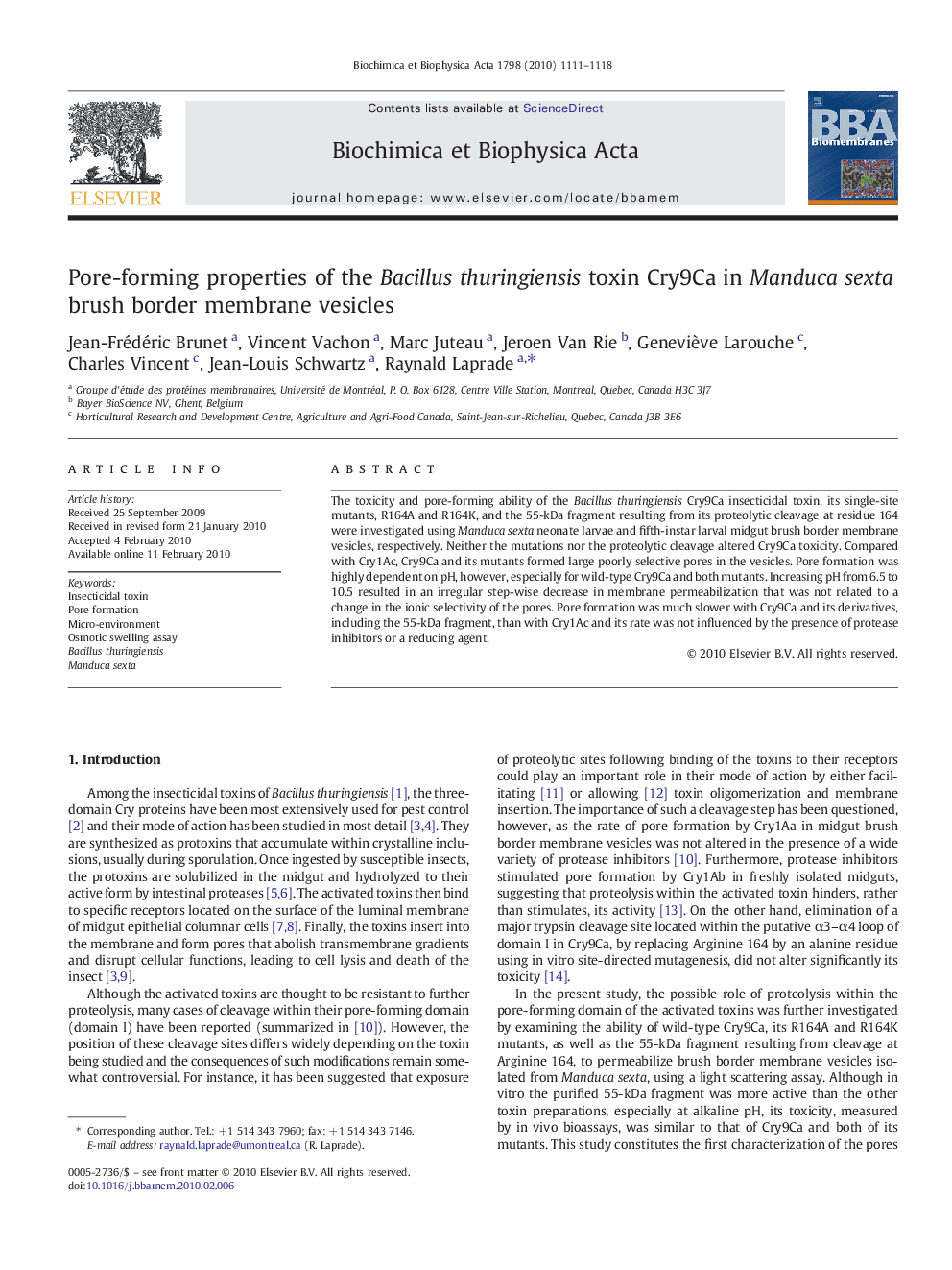| Article ID | Journal | Published Year | Pages | File Type |
|---|---|---|---|---|
| 1944850 | Biochimica et Biophysica Acta (BBA) - Biomembranes | 2010 | 8 Pages |
The toxicity and pore-forming ability of the Bacillus thuringiensis Cry9Ca insecticidal toxin, its single-site mutants, R164A and R164K, and the 55-kDa fragment resulting from its proteolytic cleavage at residue 164 were investigated using Manduca sexta neonate larvae and fifth-instar larval midgut brush border membrane vesicles, respectively. Neither the mutations nor the proteolytic cleavage altered Cry9Ca toxicity. Compared with Cry1Ac, Cry9Ca and its mutants formed large poorly selective pores in the vesicles. Pore formation was highly dependent on pH, however, especially for wild-type Cry9Ca and both mutants. Increasing pH from 6.5 to 10.5 resulted in an irregular step-wise decrease in membrane permeabilization that was not related to a change in the ionic selectivity of the pores. Pore formation was much slower with Cry9Ca and its derivatives, including the 55-kDa fragment, than with Cry1Ac and its rate was not influenced by the presence of protease inhibitors or a reducing agent.
